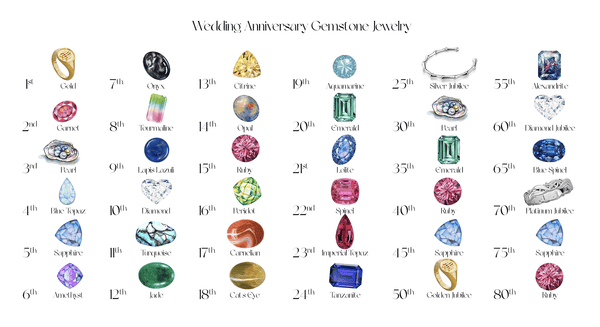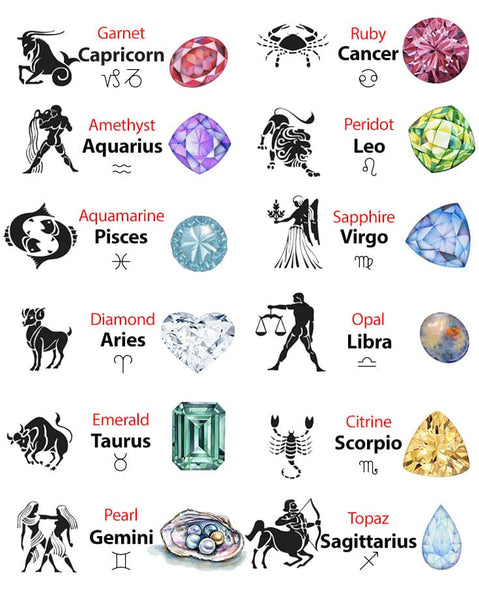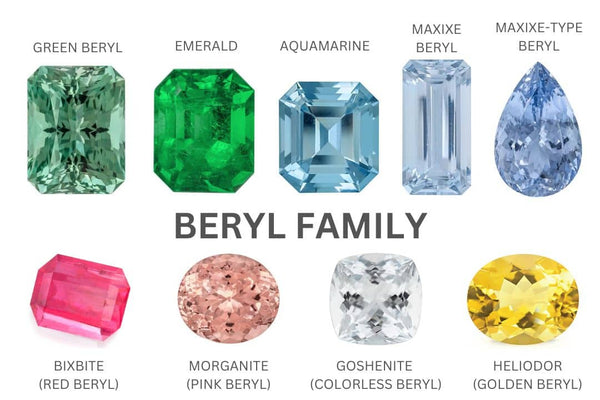Fineness of Gold Jewelry - Gold Carat, Fineness, Purity
Color of gold - Color of gold
Throughout history, gold has always been a treasure with the beauty and radiance of its natural yellow color. Therefore, many cultures have honored gold as the sun god.
Yellow gold is the most popular and loved, but today many other colors of gold jewelry are crafted and put on the market. The process of blending pure gold (pure 24 carat gold) with other precious metals to increase durability and create different colors for jewelry gold.
White gold is formed by mixing pure gold with the precious metals palladium and silver. In addition, white gold is coated with rhodium to increase the hardness and shine of the jewelry gold surface. White gold is the most popular choice for wedding jewelry in the United States.
Copper (Cu) is added to the gold band to give rose gold a light pink color, while to create a blue or purple color for jewelry gold, patinas or oxides are added to the gold guild. Black gold is crafted with cobalt oxide.

Figure: The Ag-Au-Cu Gold Association produces different colors of jewelry gold. Source: Wikipedia
24k gold is quite soft, so for delicate jewelry or gems, 18k, 14k or 10k gold is often used for processing.
Caratage of gold - CZK
Gold weight in troy ounces - Oz (1 troy ounce = 31.1034768 grams), however gold purity is measured in 'carats' - K.
'Caratage' is a measure of the purity of gold in alloys with other precious metals. 24K gold is the purest, purest, free of any other metals. The lower the caratages, the lower the gold content and the higher the content of other precious metals in the alloy; 18K gold is 75% pure gold and 25% is an alloy of other metals, usually copper (Cu) or Silver (Ag).
The minimum gold content in gold jewelry is regulated by country. In the US, 10K is the lowest standard for regulated jewelry gold, with 14K jewelry being the most common. In France, Great Britain, Austria, Portugal and Ireland, 9K is the lowest standard for gold jewelry by regulation. In Denmark and Greece, 8K is the lowest standard for gold jewelry by regulation.
Fineness of Gold - Golden Age
Gold age is another way to measure the precious metal content of jewelry and represents gold purity in parts per thousand. When stamped on gold jewelry, there is usually no dot "." like 75 instead of 0.75 for 18K gold jewelry.
This chart shows some examples of the composition of various caratage of gold.
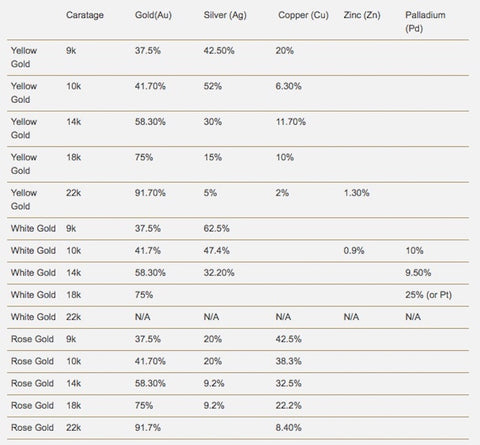
Note: The table above shows the general goldsmithing industry standard for creating the color/caratage of that gold set, but is not the only recipe for making such golds.
The white gold above does not contain nickel. White gold assemblies contain nickel in a small percentage and often contain other base metals such as copper (Cu) and zinc (Zn).
The following are the common standards of fineness that are used:
- .375 = 9 carats (England and Canada)
- .417 = 10 carats
- .583 (.585) = 14 carats
- .750 = 18 carats
- .833 = 20 carats (Asia)
- .999 (1000) = 24 carats of pure gold

14K jewelry gold has a gold content of 583 (14/24 = .583333), but in reality jewelers in Europe often make 14 carat gold jewelry with a gold content greater than 14 carats. So the gold age is stamped 585 for 14 carat jewelry gold.
Likewise, 24-carat gold has a gold content of 1.0 (24/24 = 1.00). However, in reality, there is always a small amount of alloy mixed in gold, so the purest gold has a gold content of 999.9 parts per thousand and stamped 999.9.
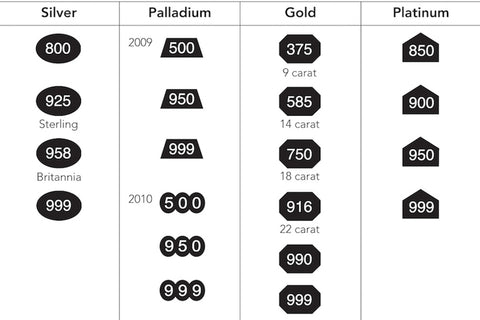
Image: The "Fineness Mark" is engraved in gold on palladium, platinum, gold, silver jewelry.
Gold purity tolerances are accepted in all markets.
Gold weight conversion table:
- 1 Ounce ~ 8.3 only ~ 31,103 grams
- 1 ct ~ 0.053 only ~ 0.2 grams
- 1 amount = 1 plant = 10 only = 37.5 grams.
- 1 just = 10 stools = 3.75 grams.
- 1 stool = 10 cups = 0.375 grams.
- 1 cup = 10 zem = 0.0375 grams.
- 1 zem= 10 mi = 0.00375 grams.
Source: World Gold Council , World Gold Council
AME Jewelery tests gold content (gold age) for all gold jewelry products by spectrometer.


